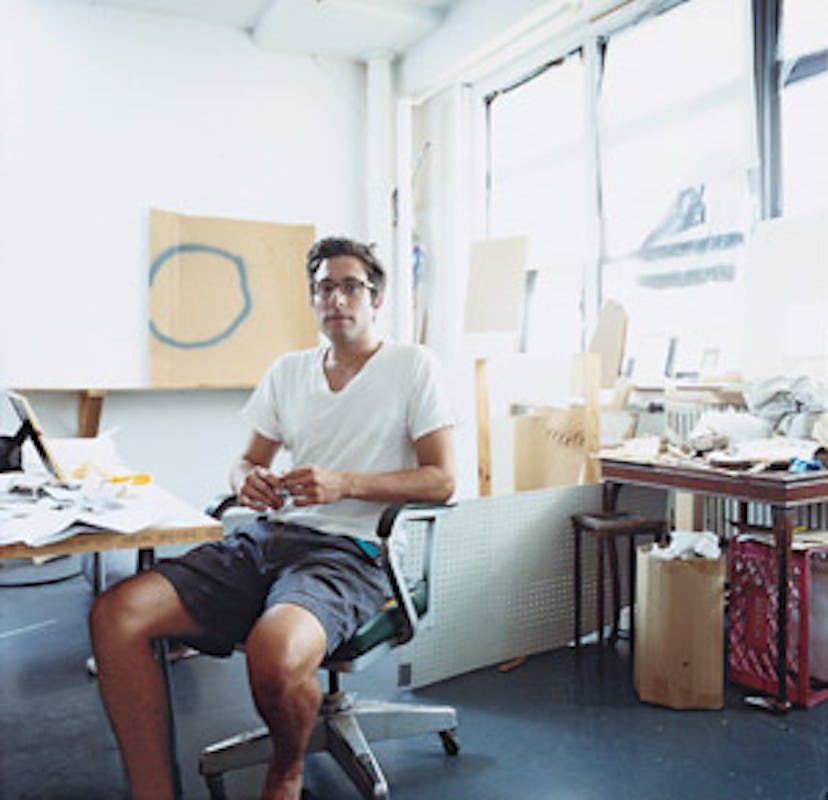Young Artists: Gedi Sibony
The sculptor makes deceptively simple works that are informed by semiotics (and the contents of the nearby dumpsters).

It’s likely that the Brooklyn Navy Yard’s other tenants—mostly construction, office supply and metal fabrication companies—know nothing of the nocturnal activities of their neighbor, sculptor Gedi Sibony, though some may have noticed that their discarded supplies tend to disappear before garbage trucks have a chance to tow them away at dawn. “When someone moved out across the hall, I went in there at night and took some doors, vertical blinds,” the artist says from his studio in the industrial complex, rocking back on the heels of his brightly colored sneakers. A longish mop of dark hair makes him look younger than his 35 years. “Nobody knows what I do here. I don’t talk to anybody. I roam around looking for things they don’t want.”
Installation view of his work at the 2006 Whitney Biennial.
The studio’s cavelike maze of rooms is crammed from floor to ceiling with objects Sibony has amassed over nearly a decade: rolls of industrial carpet, hunks of plywood, panes of Plexiglas. His process begins with wandering around the stacks until something catches his eye; he then drags the item into a white-walled area—the “fake room,” as he dubs it—to consider it, both alone and in the context of other objects. He avoids altering his finds from their original state, so his sculptures are strikingly simple—a piece of carpet, say, flipped over to reveal its beautifully patterned underside, or a door swathed in a silver plastic sheet. Before an opening he’ll spend days arranging his works so that the light will energize them, creating rich “situations” for viewers. To prep for his show this fall at Berlin’s Galerie Neu, he pored over the gallery’s layout, noting the location of windows, doorways and light fixtures.
“We are bombarded by imagery and can read codes of visual information really fast,” says Yasmil Raymond, a curator at the Walker Art Center in Minneapolis. “And what occurs with Gedi’s work is the opposite—he returns the viewer to this primal level, almost like when we were children. Nothing’s obvious, so there’s an incredible generosity: He arranges for you to have an experience.”
Sibony, who, after graduating from Brown University in 1995, worked as an assistant for Chuck Close, calls what he does “using objects to make spaces deeper, to complicate space.” He traces this approach to a childhood spent hanging around his family’s home renovations shop in East Harlem. “My parents would look at apartments and figure out how to maximize the space’s potential,” he says.
At Brown, Sibony studied semiotics, a branch of literary theory whose analytic approach to language also seems to have trickled into his art. “Everything is absolutely necessary in his work—every element relates to each other, as a body of language,” says Philippe Vergne, now the director of Dia Art Foundation in New York, who selected Sibony for inclusion in the Whitney Museum’s 2006 Biennial.
Sibony also manages to see an autobiographical element in his sculptures—if only in the act of finding, considering and arranging their materials. “I did something to these objects; they kept me company,” he says. “I can’t help but look at them as something that reflects me.”